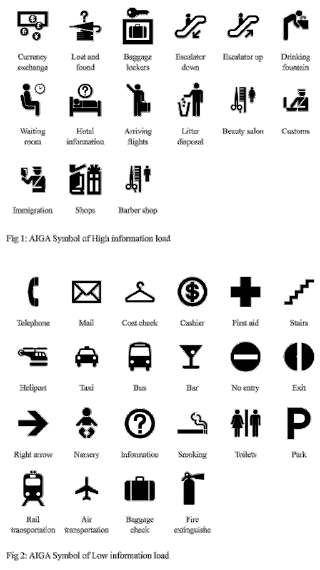出展者紹介 Exhibitors Profile
National Taiwan University of Science and Technology
Graduate School of Design, Taiwan
台湾・国立台湾科技大学工商業設計系大学院

Pin-Chung Lin 林 品章
Professor , Department of Industrial and Commercial Design, National Taiwan University of Science and Technology, Taiwan
台湾・台湾科技大学工商業設計系 教授、学科長
RECOGNITION EFFICIENCY OF GRAPHICAL SYMBOLS – I
A study of AIGA Symbols based on Information Loads and Cognitive Styles
Tzu-Fan Hsu, Pin-Chang Lin
Electronic paralanguage of graphics is the non-verbal medium used widely in online communication environment. The study sampled electronic paralanguage of graphics in bulleting board system and focused on the recognition efficiency, strategy and preference based on cognitive styles through GEFT, which are consisted of field independent style and field dependent style, and graphic types, which are classified into facial emotion( Fig 1) and body gesture ( Fig 2) through reference. The main findings of this study are as follows:
1. The interaction between cognitive styles and information loads of graphical symbols are not significantly different. The information loads of graphical symbols affect the recognition efficiency significantly since high information loads needs more time to recognize and is lower in accuracy. The recognition efficiency between cognitive styles are not significantly different. However, cognitive styles could be a main variable in higher information loads.
2. Graphical symbols of low information loads are recognized as individual entities; hence, the accuracy of recognition is high when graphical symbols exhibited iconic meanings, which is also a main recognition strategy. It needs design guidance to improve the recognition efficiency of graphical symbols of low information loads with indexical meanings.
3. When a proportioned human figure presented in graphical symbols of high information loads, participants tend to
describe the relationships between the figures and objects in the graphical symbols using third persons’ point of views; in addition, movements and clothings are used as auxiliary information in aiding recognition. When symbolic meanings of graphic are unrecognizable, the recognition accuracy is affected significantly.

RECOGNITION EFFICIENCY OF GRAPHICAL SYMBOLS – II
A Study of Electronic Paralanguage of Graphics based on Cognitive Styles
Tzu-Fan Hsu, Pin-Chang Lin
Electronic paralanguage of graphics is the non-verbal medium used widely in online communication environment. The study sampled electronic paralanguage of graphics in bulleting board system and focused on the recognition efficiency, strategy and preference based on cognitive styles through GEFT, which are consisted of field independent style and field dependent style, and graphic types, which are classified into facial emotion( Fig 1) and body gesture ( Fig 2) through reference. The main findings of this study are as follows:
1. The facial emotion and the body gesture are the main type of electronic paralanguage of graphic in online communication. And the proportion of the facial emotion is higher than the body gesture. There is also a common consensus around the recognition in it. The users are willing to enhance the richness of electronic paralanguage of graphic by means, such as the deverbative applied in electronic paralanguage of text.
2. In the aspect of recognition effects, there existed significant differences between field independent style and field dependent style. Compared to field dependent style, the electronic paralanguage of graphics is treated with open-mindedness by field independent style.
3. The tendency in selecting electronic paralanguage of graphic is significantly influenced by convenience. Accordingly, the electronic paralanguage of graphics with simple shape and easy typing will have better performance in utility rate, acceptability and recognition efficiency.
4. There existed significant interaction between cognitive styles and the types of electronic paralanguage of graphics. Generally, there will be a rise in recognition effects when field independent style meets facial emotion type of electronic paralanguage of graphics.
 HOME
HOME 前のページへ
前のページへ